| |||||
| Decades: | |||||
|---|---|---|---|---|---|
| See also: | Other events of 1975 Years in Iran | ||||
The following lists events that happened during 1975 in Iran.
| |||||
| Decades: | |||||
|---|---|---|---|---|---|
| See also: | Other events of 1975 Years in Iran | ||||
The following lists events that happened during 1975 in Iran.
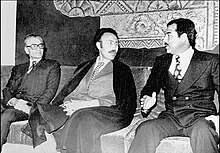

The Shatt al-Arab is a river about 200 kilometres (120 mi) in length that is formed at the confluence of the Euphrates and Tigris rivers in the town of al-Qurnah in the Basra Governorate of southern Iraq. The southern end of the river constitutes the Iran–Iraq border down to its mouth, where it discharges into the Persian Gulf. The Shatt al-Arab varies in width from about 232 metres (761 ft) at Basra to 800 metres (2,600 ft) at its mouth. It is thought that the waterway formed relatively recently in geological time, with the Tigris and Euphrates originally emptying into the Persian Gulf via a channel further to the west. Kuwait's Bubiyan Island is part of the Shatt al-Arab delta.
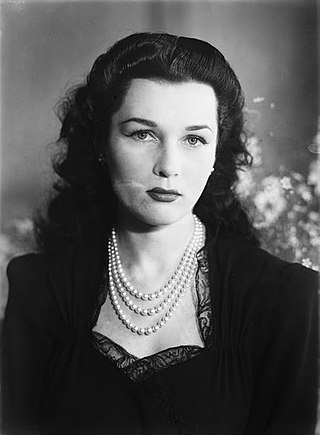
Fawzia of Egypt, also known as Fawzia Pahlavi or Fawzia Chirine, was an Egyptian princess who became Queen of Iran as the first wife of Mohammad Reza Pahlavi, Shah of Iran. Fawzia was the daughter of Fuad I, seventh son of Ismail the Magnificent. Her marriage to the Iranian Crown Prince in 1939 was a political deal: it consolidated Egyptian power and influence in the Middle East, while bringing respectability to the new Iranian regime by association with the much more prestigious Egyptian royal house. Fawzia obtained an Egyptian divorce in 1948, under which their one daughter Princess Shahnaz would be brought up in Iran. Fawzia, who was known as the "sad queen" in the press, lived in isolation and silence after the 1952 Egyptian revolution and never published her memories of the court of Iran and Egypt.

The prime minister of Iran was a political post that had existed in Iran (Persia) during much of the 20th century. It began in 1906 during the Qajar dynasty and into the start of the Pahlavi dynasty in 1923 and into the 1979 Iranian Revolution before being abolished in 1989.

Teymur Bakhtiar was an Iranian general and the founder and head of SAVAK from 1956 to 1961 when he was dismissed by the Shah. In 1970, SAVAK agents assassinated him in Iraq.

The Shāh Abdol-Azīm Shrine, also known as Shabdolazim, located in Rey, Iran, contains the tomb of ‘Abdul ‘Adhīm ibn ‘Abdillāh al-Hasanī. Shah Abdol Azim was a fifth generation descendant of Hasan ibn ‘Alī and a companion of Muhammad al-Taqī. He was entombed here after his death in the 9th century.

Hasan Ali Mansur was an Iranian politician who served as Prime Minister from 1964 to 1965. He served during the White Revolution of the Shah Mohammad Reza Pahlavi and was assassinated by a member of the Fada'iyan-e Islam.

The 1975 Algiers Agreement, also known as the Algiers Accord and the Algiers Declaration, was signed between Iran and Iraq to settle any outstanding territorial disputes along the Iran–Iraq border. Mediated by Algeria, it served as the basis for additional bilateral treaties signed on 13 June 1975 and 26 December 1975. The territorial disputes in question concerned Iraq's Shatt al-Arab and Iran's Khuzestan Province, and Iraq had wished to negotiate to end Iran's support for the then-ongoing Iraqi Kurdish rebellion after suffering a military defeat in the 1974–1975 Shatt al-Arab conflict. On 17 September 1980, shortly after the Iranian Revolution, the Iraqi government abrogated the treaty in light of another series of cross-border clashes between the two countries. On 22 September 1980, the treaty was completely voided with the Iraqi invasion of Iran, which triggered the eight-year-long Iran–Iraq War.

The following events occurred in March 1975:
Ettela'at is a Persian-language daily newspaper of record published in Tehran, Iran. It is among the oldest publications in the country, and the oldest running Persian daily newspaper in the world. The paper has a conservative stance, and focuses on political, cultural, social, and economic news. Until the 1979 Iranian Revolution, the newspaper was associated with its chief founder Abbas Massoudi (1895–1974).
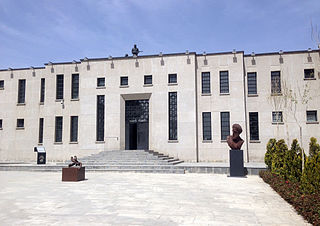
The Museum of the Qasr Prison is a historical complex in Tehran, Iran.
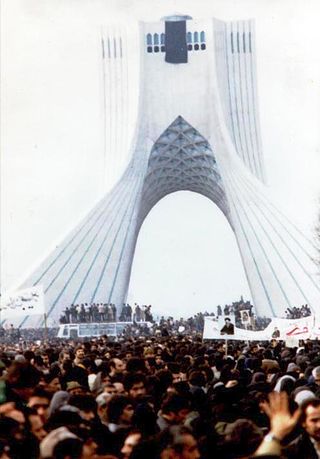
This article is a timeline of events relevant to the Islamic Revolution in Iran. For earlier events refer to Pahlavi dynasty and for later ones refer to History of the Islamic Republic of Iran. This article doesn't include the reasons of the events and further information is available in Islamic revolution of Iran.

Farrokhroo Parsa was an Iranian physician, educator, and parliamentarian.

Mohammad Reza Pahlavi, commonly referred to in the Western world as Mohammad Reza Shah, or just simply the Shah, was the last monarch of Iran. He began ruling the Imperial State of Iran after succeeding his father, Reza Shah, in 1941 and remained in power until he was overthrown by the 1979 Iranian Revolution, which abolished the country's monarchy and established the Islamic Republic of Iran. In 1967, he took up the title Shahanshah and held several others, including Aryamehr and Bozorg Arteshtaran.

Corruption is a serious problem in Iran, being widespread, mostly in the government. Reformists and conservatives alike – routinely criticize corruption in the government.]

Arteshbod Gholam-Ali Oveissi was an Iranian general and the Chief Commander of the Imperial Iranian Armed Forces under Mohammad Reza Pahlavi. He was the last general to head the Imperial Army of Iran. He is regarded as one of the most powerful and adept military generals in Iran's modern history.
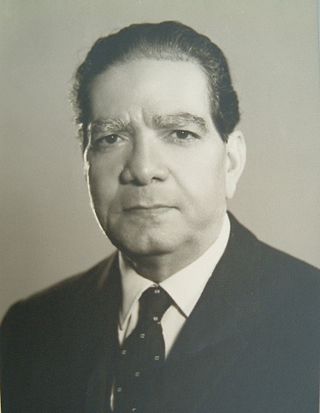
Abbas Aram (1906–1985) was an Iranian diplomat and served as foreign minister for two terms between 1959 and 1960 and between 1962 and 1966. In addition, he was the ambassador of Iran to various countries, including Iraq, the United Kingdom and China.
Events from the year 1973 in Iran.
The following lists events that happened during 1975 in Iraq.